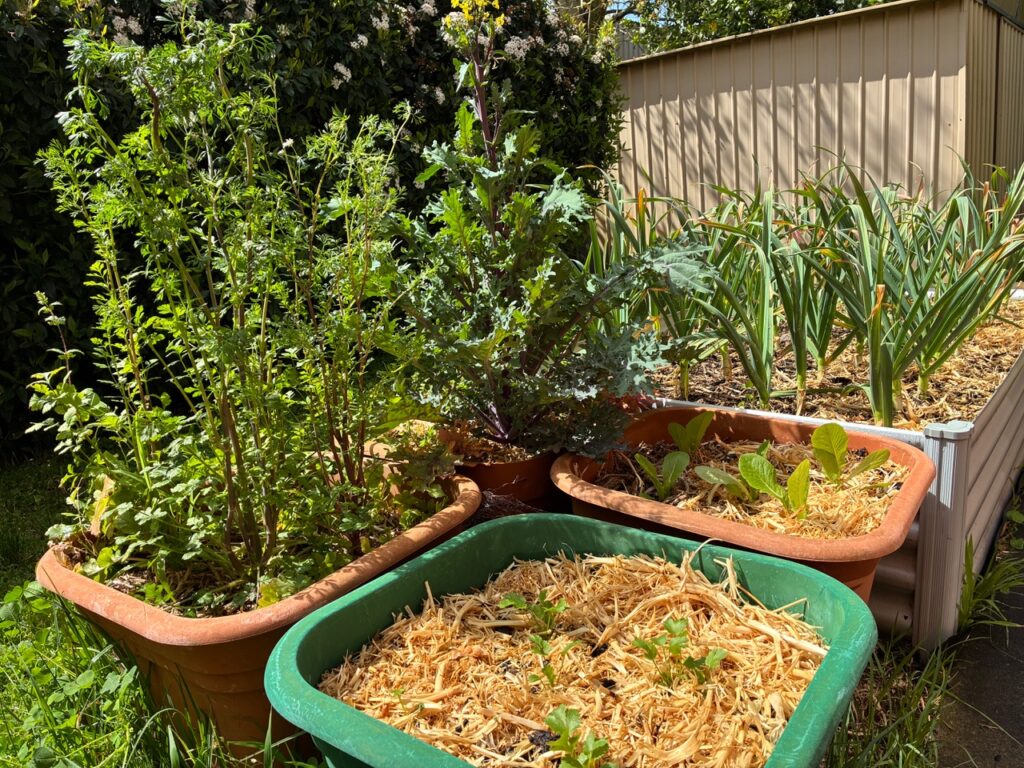
In the years I lived in California, I became enamoured of collard greens, those excellent large, very dark green fronds that are a staple of African American cooking in the south of the USA. In the spring, they were abundant at the Berkeley Bowl and at local farmers markets. When I returned to Australia, I found that they are difficult to source here, so I sought out seeds to grow my own. 19 years later, I am still growing collards many generations on from those original seeds.
My recipe for the spring season is to stuff these leaves with a mixture based on quinoa, but other grains can be used such as rice, bulghur (cracked wheat) or couscous. Unfortunately, this year my leaves are not large, having been planted in a shadier part of the garden over winter.
If you cannot find collards at your local farmers market, you can use cabbage leaves instead.
Many of the ingredients of this recipe utilise the foods discussed in the previous blog: the dark green colour of the collards, the sour foods of vinegar, tomato, leek, mint and olive oil, and the liver cleansing properties of coriander. All in all, it’s a perfect combination for supporting the liver in the springtime.
INGREDIENTS
6-8 collard leaves depending on size
1 ½ cups of cooked quinoa
100 g leek tops finely sliced
1 heaped tablespoon of chopped fresh coriander
1 heaped tablespoon of chopped fresh mint
50 g ground roasted almonds
1 tablespoon olive oil plus some for sautéing
1 tablespoon apple cider vinegar
500 ml tomato puree/passata
½ cup water
Salt and pepper to taste
6-8 kalamata olives
METHOD
Filling:
Sauté the leek tops in a little olive oil, stirring continually until crispy.
Combine in a bowl with the cooked quinoa, coriander and mint, ground almonds, olive oil, cider vinegar, salt and pepper.
Collards:
Cut out the tough stems of the collards,
In a large pot, bring a couple of litres of water to the boil.
Place the leaves in the boiling water for 5 minutes to soften, then remove.
Place portions of the filling into the centre of each leaf and wrap into a parcel.
Place the parcels into a baking dish.
Cover with the tomato puree and water.
Top each parcel with an olive.
Cover the dish with a lid and bake at 190°C for 20 minutes.
Serve as a side dish or as a main with baked potatoes and honeyed carrots, as an example.
Say thank you to your liver for all its hard work.



